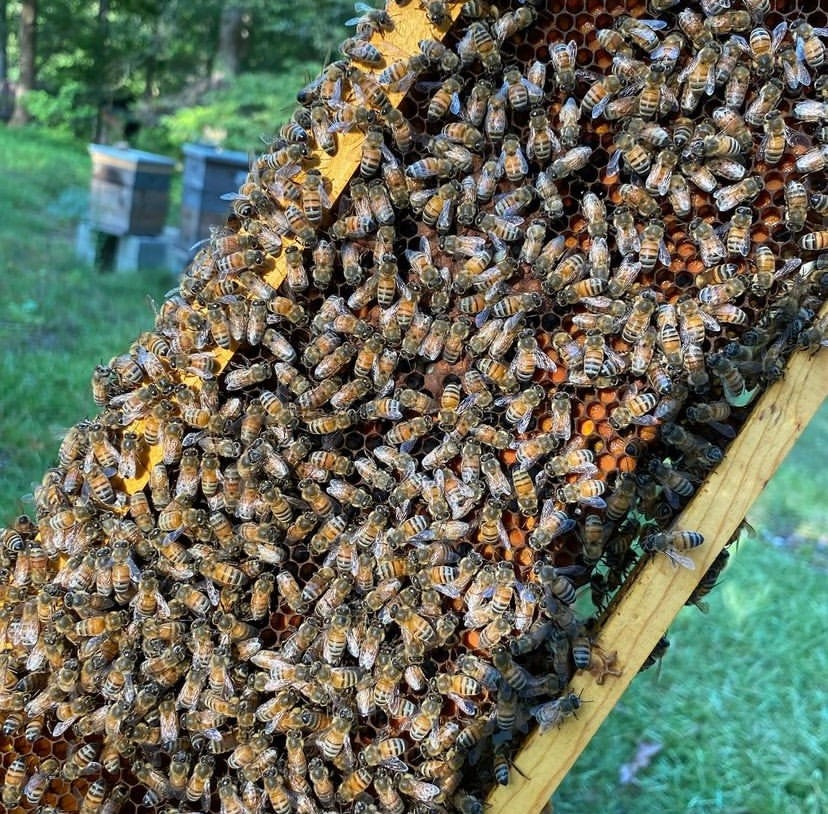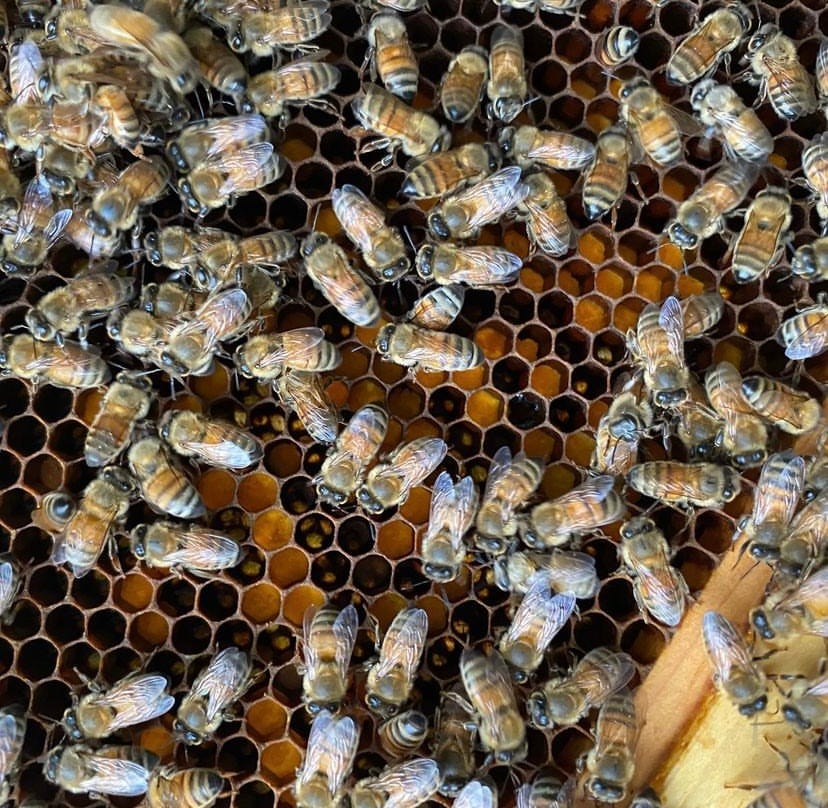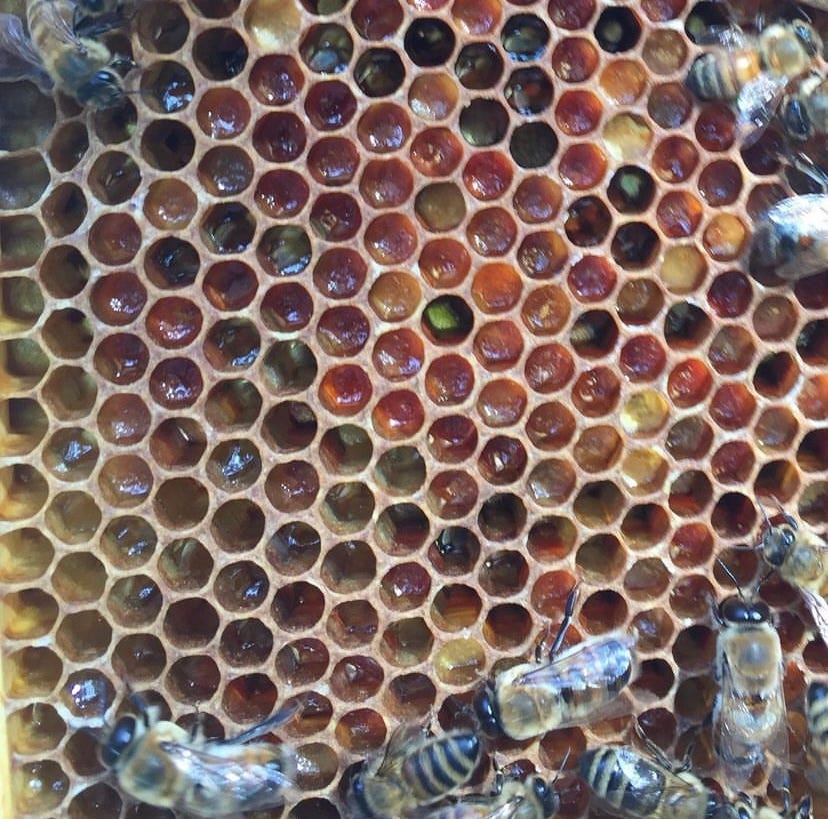Vitamin P: Pollen
Required to raise baby bees, pollen provides a powerhouse of nutrients for honey bee colonies and humans.
While it may be a happy accident, I remember noticing an interesting pattern during my first year of beekeeping. When fall came around, the honey bees pressed beautiful orange and yellow pollen into the comb. I was tickled to see them decorating for Halloween. Then in the spring, deep red pollen stored in cells in between nectar that glistened in the sun. It looked like a Valentine’s Day jewelry box.
Pollen’s limitless potential
Those varying colors represent nutrient-dense, biodiverse food for the next generation of bees. When collected for humans, pollen provides multiple health benefits. Research shows that pollen can help reduce cell damage caused by free radicals, lower cancer and cardiovascular disease risks, and fight bacteria and reduce inflammation.
Polyphenols come in abundance in pollen. According to the publication ANTIOXIDANTS, a piece published one year ago explains that “bee pollen is known as ‘the perfectly complete food’ due to its strong antioxidant potential and the presence of antioxidant compounds such as polyphenols, flavonoids, carotenoids, and vitamins (A, C, and E) giving this product a high antioxidant potential.” The article further reveals that pollen provides all essential amino acids needed in human nutrition.
NUTRIENTS published research that seems to showcase bee pollen as a missing puzzle piece. What food could help reduce the affects of toxins, improve cognition, improve early biological development, help with glycemic control, and lower cholesterol? Pollen. What food can prevent obesity, cardiac conditions, and diabetes? Pollen.
Considering the highly-specialized anatomy of the honey bee, no wonder pollen has so much health potential. Baby bees need the most nutritious food possible to develop and grow into a healthy adult honey bee. Healthy adult honey bees are capable of flying up to 4 miles for forage. (Some beekeepers have told me they’ve heard some cases of 7 miles, and one even said 12 miles.)
What to ask about pollen harvesting
When it comes to products from the hive, I mainly focus on honey harvesting—only if there’s excess. I’ve also harvested propolis a few times and made propolis tinctures. This spring I plan to harvest pollen for the first time. Learning more about pollen’s positive health impact motivates me to take advantage of a resources that’s right here in my yard.

If you don’t have a hive readily available, connect with a local beekeeper. Unfortunately, like the adulterated honey issues in mass-produced honey, some bee pollen supplements sold in mass markets have a similar poor reputation. The FDA found controlled substances linked with several health issues in the pollen supplements. Trace the source of your bee pollen and ask the beekeeper questions about how they harvest pollen:
When do you collect pollen? This is important to ask because you’ll have a better understanding of which plants may have been in bloom during the harvest time in your region. You can also learn if the beekeeper is knowledgeable about appropriate pollen harvest windows. They shouldn’t be adding pollen traps in the middle of winter, for instance. (Unless they’re close to the equator.)
How do you choose which hives you collect pollen from? Asking a beekeeper this question should prompt a response about healthy colonies. Best practice involves selecting the healthiest colonies for pollen collection, and then only adding pollen traps on colonies with adequate existing pollen within the hive. Pollen traps are attached at the entrance of the hive, so collection doesn’t impact all of the pollen the bees have already stored inside the hive. An adequate amount of pollen to see in the hive will depend on the colony size. According to Certified Naturally Grown, beekeepers should look for one entire side of a frame full of pollen for every 8 frames of baby bees (brood). Beekeepers with an eye for honey bee health should look for this ratio, or a more conservative one, before adding a trap.
How long do you collect pollen from each hive? Certified Naturally Grown encourages no more than one week for a pollen trap, and if it will be used more, then a 3-week window should separate collection times.





